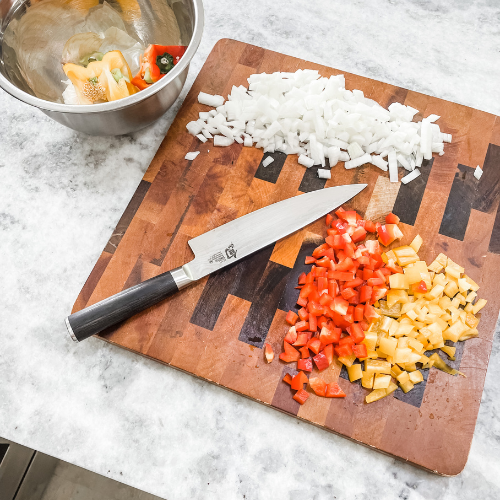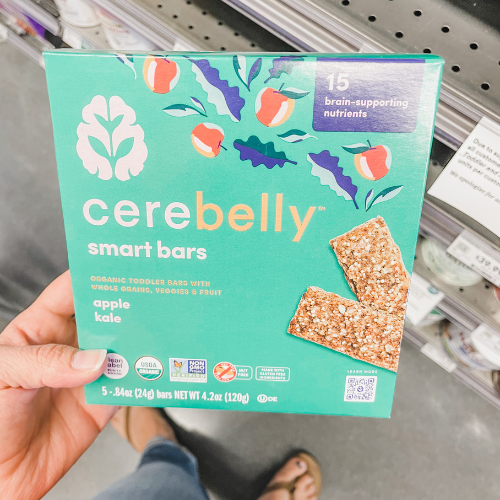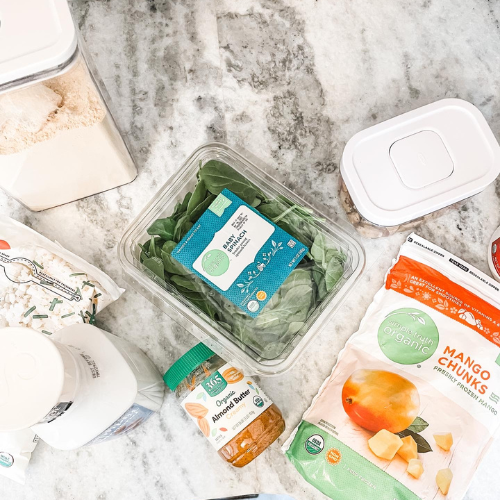
How to Feed Your Family Well on a Budget
Jun 14, 2022Have you ever wondered where all of your grocery budget goes and how you can make it stretch further? Have you ever found yourself resenting food altogether because the whole idea of planning meals and shopping for groceries sends you running for the hills? I get it! With the current economic climate and rising costs, now is the time to develop meal planning and grocery shopping skills. Saving $50 here or $100 there may not seem like much but think about it this way. Those dollars can quickly add up if extra time spent planning your meals means you avoid going out to eat. In this post, you will learn how to strategically execute your meal planning and grocery shopping in order to save money and keep your sanity while still feeding your family well on a budget.

Meal Plan & Prep Strategy
Any good strategy starts with a plan. First things first, you must identify your budget. What is your grocery budget goal for the week? $100? $200? $300? Grocery budgets are intensely personal but my favorite budgeting guru, Dave Ramsey, recommends that we allocate around 10-15% of our budget for food costs. I also personally recommend having one night a week to order out. I don’t know about you but I have three kids 6 and under, so sometimes, Mama needs a break. Add a firefighter schedule to the mix and you have a recipe (no pun intended) for hitting the easy button once a week a la Door Dash. Planning for that in advance helps avoid impulse takeout and allows us to strike a nice balance.
Another easy button idea is to stash 3 or 4 frozen meals that you can quickly thaw and reheat. We usually have a frozen chili or beef stew ready to go when effort and inspiration are running low.
Next, I recommend picking a few devices and techniques for cooking that you prefer and feel comfortable utilizing. Personally, we use our Instant Pot at least once a week and enjoy roasting things in the oven or using the cast iron skillet. Acknowledging how you actually like to cook will result in you actually cooking more often. If you hate elaborate meals that require 20,000 ingredients, then taking some time to marinate (I can’t stop with the puns) on that thought will help your future self avoid a lot of overwhelm.
The next grocery planning tip is to create a meal inspiration cheatsheet. I did this years ago after a friend introduced me to this idea and it has been revolutionary. You can use the Notes app on your phone (that’s what I do), use a physical binder, or save all of your recipes on Pinterest. I have a Notes section on my phone that lists cuisines by geographic location and also meal types (Thai, Indian, Mexican, salads, soups, snacks for the kids). When I’m feeling lazy, I can go to the list and quickly shuffle through to find something that sounds yummy. You don’t need to spend hours each week planning your grocery list. This is also where you can ruthlessly cut anything that doesn’t fit within your lifestyle. No complicated recipes here. My cheatsheet only contains our go-to recipes and usually requires things we already have on hand.
If you need inspiration from actual food bloggers, I highly recommend:
Fed + Fit (sign up for Cassy’s weekly newsletter or check out her Cook Once, Eat All Week book series)

You see where I’m going next, right? Meal prep, you guys! Meal prep is the best way to save money. Sure, you can save money in the grocery store but you also need to actually cook what you buy. If you don’t cook what you buy, then you’ll just order out. I consider these meal prep strategies to be part of the planning process. We are simply designing a route to get us from point A (hungry and overwhelmed) to point B (systematized weekly meal planning and prep).
Meal prep tips:
- Stop meal prepping things you don’t want to eat
- Meal prep 1 or 2 times a week
- Keep it simple
- Think 1 protein, 1 starchy vegetable or grain, 1-2 vegetables, and cook in fat or add as topping
- Consider themed nights
- This works really well if you have little kids who are picky
- Choose a meatless Monday to stretch your grocery dollars
- Use sauces or toppings to add excitement and make it more likely you’ll actually eat what you cooked
Before you begin meal planning, let’s review bottlenecks:
- What’s working for you right now?
- Do more of that.
- What’s not working?
- What can you change? What can you modify?
- Does produce always go to die in your fridge? How can you remedy that? Make a weekly soup on Friday with leftover veggies? Buy fewer fresh vegetables?
- Where are you overspending?
- Do you always buy snacks and treats that aren’t on your list? Maybe grocery pick up is a solution so you’re not tempted in the store.
- Do you spend $20-30/week on alcohol, kombucha, fancy coffee drinks, or other things that aren’t really food?
- Is cooking too time-consuming and overwhelming?
- Do you need a way to make your life easier? What convenience items can really help you?
- For me, I always pick up pouches, pre-made granola cereal (usually Purely Elizabeth brand) or oatmeal bars, and plain Greek yogurt.

Meal Planning
Okay, so now you have the bones of your meal planning in place. Great job! Now, let’s move on to actually planning out your grocery shopping list.
To start your list, let’s shop your pantry, fridge, and freezer. Food waste is a real problem, with the USDA finding that about ⅓ of food in our supply chain is being wasted everyday. This is nuts! If we decrease our demand, we save money and decrease food waste. Win-win. Apps like Supercook can even help you find a recipe with ingredients you already have on hand. How cool is that?
Now that you have the first items on your list, you can start creating your meal plan. And look at you, you already have your handy dandy meal inspiration cheatsheet. You rock! In just a few minutes, you can cross-reference the ingredients you already have at home with your cheatsheet to come up with a meal plan for the week. Plan for eating leftovers too!
I usually recommend planning for 1 breakfast, 1 lunch, and 4-5 dinners for the week.
My usual routine for breakfast and lunch:
- Homemade pancakes, eggs and sausage, yogurt with granola, or smoothies for the kids’ breakfasts
- Smoothies for my breakfast on workdays and egg dishes on the other days
- Leftovers for lunch or a “kitchen sink” salad with a can of salmon or tuna

Pro tip: order your groceries online and have them scheduled to pick up. This is usually free or maybe $5 depending on where you shop for groceries. Personally, I feel that this will save you money in the long run because you aren’t tempted to snag those Siete tortilla chips on the end cap. Speaking of tempting treats, if you’re actually hauling your butt into the grocery store, have a snack or meal before going to the store. Never, I repeat never, grocery shop hungry. That’s a recipe for not sticking to your list. Yikes!
Shopping
So you’ve created a loose structure for meal planning, you’ve whipped up your list for the week, and you’re getting ready to go to the store. Here are my top tips for saving money in the store. Once you find a rhythm, you can incorporate these tips into the meal planning process.
In the store:
- Stick to your list
- Make sure to have a snack beforehand.
- Opt for single-ingredient foods
- The best way to save money is to avoid anything that someone else prepared for you. I find (in most areas of life actually) that you’re either spending time or money so decide where you have time to prep and what you'd prefer to have done for you. Examples include whole heads of broccoli vs cut up broccoli or a whole block of cheese vs cheese sticks.
- Choose store brand or generic items when possible
- Many stores will offer substantial discounts for their house brand. And for many items, this works well.
- Shop high and low
- You’ve probably heard of this before: prime real estate in the grocery store is at eye level. So stand on your tippy toes and squat down if you want to save money. Bonus: bodyweight exercise!
- Buy in bulk
- What foods store really well that you can purchase in bulk? We go to Costco once a month and buy certain items in bulk and we end up spending about ⅓ of what we would spend in a regular grocery store for the same amount of those items. Avocado oil, coffee, cheese, rice, sardines, diced tomatoes, sparkling water, toilet paper, paper towels all come from Costco.. I just love Costco for these things! They have very affordable prices on many organic items as well.
- Prioritize organic purchases
- Speaking of organic, if your budget allows use the Clean 15 and Dirty 12 to prioritize what dollars go to purchasing organic produce.
- Choose unpopular cuts of meat or whole poultry and fish
- Tougher cuts of meat or whole chickens and whole fish can save you money. If you have the money up front and freezer space, you could also consider purchasing a ¼ cow. This will ultimately save you money in the long run but it’s a higher initial investment. Plus, you need ample freezer space.
- Shop in-season produce
- Opt for produce that is in season to save money. Buying strawberries out of season can be a real money pit.
- Choose frozen fruits and vegetables
- Personally, frozen broccoli is disgusting to me. It never reheats well (in hindsight, maybe I’m doing it wrong?). Frozen fruit, however, blends up beautifully in smoothies and quickly cools off the oatmeal when the kids are hangry. I always keep frozen peas, carrots, and other vegetables on hand to toss into soups, stews, or to have as a quick side.
- Plan to splurge in some areas
- So where can you splurge? Where should you splurge? In my opinion, I like to recommend starting with single ingredient foods. If you just get away from processed food, you’re doing a-okay in my book.
- If your budget allows, my first splurge is organic, grass-fed or pastured meat and eggs over produce (toxins concentrate in the fat of animals) so if you can’t afford the organic, grass-fed options, then choose leaner cuts of meat. After that, I prioritize clean 15 and dirty 12 for fruits and vegetables. Then I pick healthier treats, beauty products, etc..
- Get out of your own way
- Avoid overwhelm. Perfection is the enemy! The best way to save money at the store is to simply purchase simple, single ingredient foods like chicken, sweet potato, kale, eggs, rice, salmon, asparagus, apples, almonds, pumpkin seeds, etc.. and then combine those ingredients at home to make meals. This is what we’ve done for thousands of years and it worked until we began outsourcing our food production and preparation.
I hope these tips were helpful. If you want more tips and support on how to structure your life so you can eat well, sleep well, think well, and overall be well, then follow me on Instagram! We are launching our Root and Ritual Collective monthly membership in July. It’s a 12 month membership for $79 a month that includes biweekly live open office hours with me where we will be reviewing a topic and then opening it up for live Q&A. It’s functional medicine meets group visits and it’s affordable! If you are functional medicine curious or simply want to be surrounded with like minded people, then this group is for you. We will also have a Facebook group and you’ll have the option to purchase test kits if you feel that you need some extra TLC. Not everyone needs individual functional medicine appointments but everyone deserves functional medicine education. This is my answer to that nudge in my soul to provide people with support and accountability beyond a podcast or blog or Instagram post. If you join the email list, you’ll be the first to know. Until next time, sweet friends!

